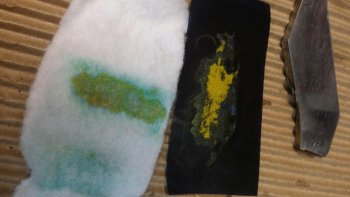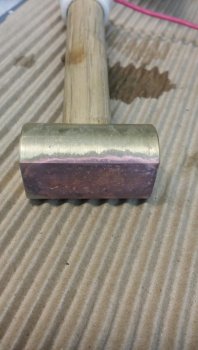Jason Wernli
Well-Known Member
I tried to use my new etching machine and makers marks for the firsttime yesterday.
This is the first time that I have used a marking machine, and I did nothave much success…
I have a marking machine from Ernie's plans. Attached is a picture of the stencil after Iused it and a picture of the marker.
I was hoping I could tell you what I did and maybe get some advice:
- Spritzed 01 steel with windex and placed on the stencil
- Attached negative lead with alligator clip
- Wetted felt pad with SCE-1 electrolyte from electro-chem etch
- Applied marking pad to stencil/steel for about 6 – 3 second bursts


The head on the wand was made from either brass, or bearing bronze... It sure discolored weird...
Etching machine is putting out 13.8 volts on DC.
What did I do wrong?
Thanks!
- Jason
This is the first time that I have used a marking machine, and I did nothave much success…
I have a marking machine from Ernie's plans. Attached is a picture of the stencil after Iused it and a picture of the marker.
I was hoping I could tell you what I did and maybe get some advice:
- Spritzed 01 steel with windex and placed on the stencil
- Attached negative lead with alligator clip
- Wetted felt pad with SCE-1 electrolyte from electro-chem etch
- Applied marking pad to stencil/steel for about 6 – 3 second bursts


The head on the wand was made from either brass, or bearing bronze... It sure discolored weird...
Etching machine is putting out 13.8 volts on DC.
What did I do wrong?
Thanks!
- Jason

